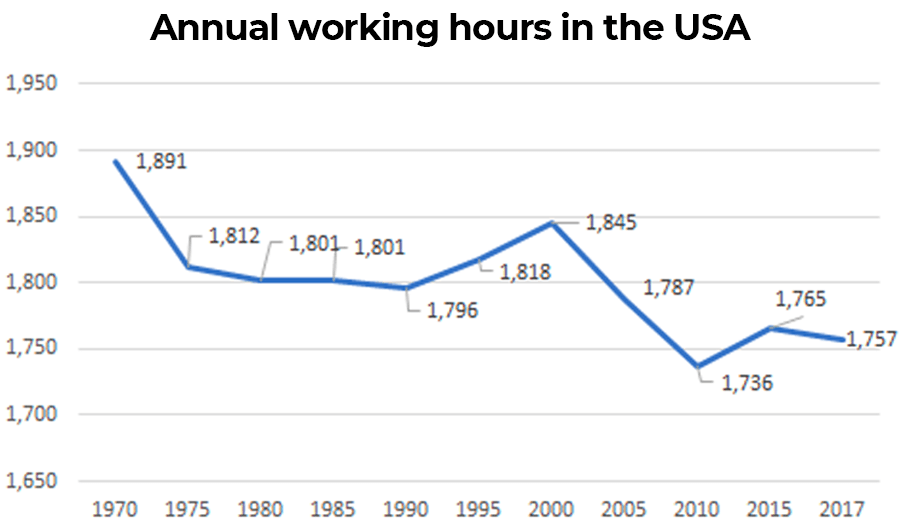
USA
More than 30 companies took part in a 4 day week pilot
4 Day Work Week in the U.S.
Traditionally, the U.S. has had a 5 day work week. While the 4 day work week has not been adopted in the U.S. to date, the country is taking steps to determine if it’s a feasible option.
The organization 4 Day Week Global undertook a 4 day work week pilot program across the U.S. and Canada. The pilot involved nearly 2,000 employees and 35 companies across North America.
Here are the results of the pilot:
Productivity and Revenue
- An 8% rise in revenue was observed during the trial.
- Revenue was up 37.55% compared to the same period in the previous year.
- The rate of hiring increased while absenteeism and resignations slightly declined.
Work-Life Balance
- Employees were able to spend more time on hobbies and volunteering.
- There was a decrease in the desire for more time spent on most activities.
- The extra time off was primarily allocated to leisure, housework/care work, and personal maintenance
Well-being
- Employees reported decreased stress and burnout post-trial.
- Self-rated physical and mental health improved after the trial.
- Employees spent more time exercising and reported less fatigue.
Commute and Environmental Impact
- A reduction in the percentage of employees commuting by car was seen, from 56.5% pre-trial to 52.5% post-trial.
- Time spent on commuting fell by nearly an hour a week.
- There was a slight increase in household recycling, walking and cycling, and purchasing of eco-friendly products.
Job Valuation
- 70% of employees reported that they would require a 10-50% pay rise to return to a five-day schedule.
- 13% said they would require more than a 50% pay rise.
- Another 13% stated that no amount of money could convince them to give up the four-day work week.
Gender Equality in Household Labor
- There was no significant change in the household division of labor.
- Men marginally increased their contribution to childcare.
- Future research is required to study changes in societal norms.
Childcare Costs
- A reduction in childcare costs was observed over the course of the trial.
Would you like a 4 day work week?
Working Hours in the U.S.
Standard working hours in the U.S. are from 8 AM until 5 PM, Monday through Friday. Unlike many countries across the world, U.S. companies don’t close for a rest period in the afternoon. Even during the standard lunch hour (12 PM until 1 PM), companies generally remain open.

As of 2021, the average number of hours worked weekly in the U.S. was 38.7. On average, data shows that men in America work longer hours (40.5) than women (36.6).
In the United States, it’s rare for offices to require their workers to come in on the weekend. Workers in some industries, such as hospitality and medical care, are required to operate on weekends.
Vacation Policy in the U.S.
In the U.S, there are no federal laws or regulations that require companies to grant vacation time to employees, either paid or unpaid. Vacation time in the United States depends solely on an employee’s agreement with their employer.
According to data from the Bureau of Labor Statistics, 92% of workers employed by the largest companies in the private sector receive some amount of paid vacation time.
There are 11 federal holidays in the United States. Many companies provide these dates as time off to employees, but legally they aren’t obligated to do so.
Part Time Working in the U.S.
The United States has a low proportion of part time employees compared to many countries. Only 25% of workers in the U.S. worked part time as of 2021, a 5% drop overall since 1994.
Like the majority of countries, the proportion of women working part time in the United States is higher than the proportion of men working part time. As of 2021, 31% of the overall female employment in the United States worked part time, while part time workers only accounted for 20% of men in the workforce.
Remote Working in the U.S.
The United States has seen a rise in the number of remote workers since the start of Covid-19. Before the pandemic, around 24% of employees worked remotely, while post pandemic, 38% of workers report working remotely at least some of the time.
